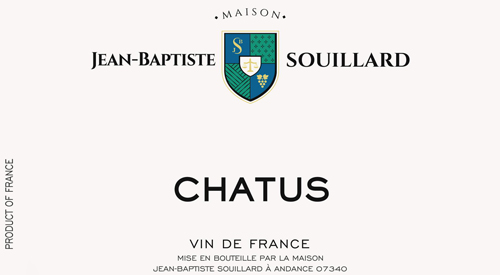Chatus
At a Glance
- Variety: Chatus
- Vine Age: Planted in the early 1990s
- Terroir: From the village of Montreal in Ardeche (southern limit of Northern Rhone), east/southeast-facing, Triassic sandstone from the Cévennes.
- Viticulture: Sustainable
- Vinification: 50-100% whole-cluster, 2-3-week ambient yeast fermentation and maceration with pump-overs, aged for 18 months in used barrels, no fining or filtration, minimal SO2 added during vinification and adjusted after if needed.
Additional Info
Chatus was the principal grape variety grown on the light standstone soils in the Cévennes in the 19th century. It was reputed to be more valuable than the other varieties “a precious plant bringing fortune to the land!” but was almost entirely replaced by the Aramon variety after Phylloxera.
The oldest Chatus vine plants belong to the Allamel family, planted in 1883, just following the Phylloxera epidemic; well-maintained and cultivated with care, these vines were the starting point of the renaissance of Chatus in the Ardèche region in the 1980s by the Cave de Rosières en Ardèche (now called La Cévenole). Today, there are fewer than 100 hectares in the world.
Wines
-
White
-
Rosé
-
Red
- Chatus
- Syrah
- Côte-Rôtie Côteaux de Bassenon
- Cornas Les Côtes
- Côte-Rôtie Tartaras
- Saint-Joseph
- Saint-Joseph Bergeron
- Saint-Joseph Château Morel
- Saint Joseph L'Echirol
- Saint-Joseph Janoune
- Crozes-Hermitage
- Crozes-Hermitage Les Baties
- Crozes-Hermitage Les Habrards
- Crozes-Hermitage Tenay
- Cornas Saint-Pierre

